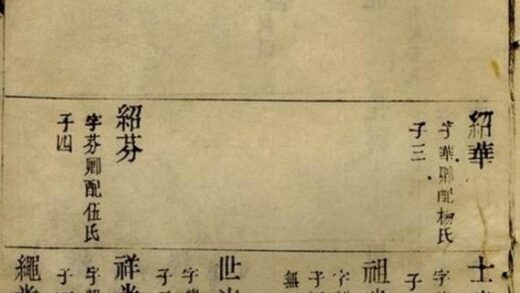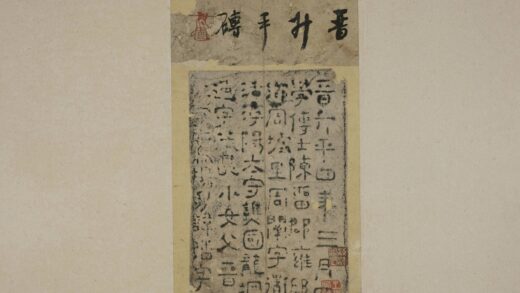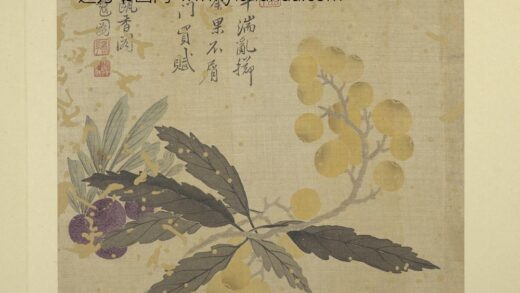【作品基本信息】
| 作者 | 王原祁 |
| 品名 | 仿黄公望秋山图轴 |
| 朝代 | 清代 |
| 文件大小 | 18.04MB |
| 分辨率(DPI) | 300×300 |
| 像素大小 | 1672×3598 |
| 尺寸(CM) | 14.15×30.46 |
| 创作时间 | 清圣祖康熙五十二年(1713) |
| 作品数量 | 1 |
| 作品收藏 | 台北故宫博物院 |
| 图片格式 | 默认提供TIF和JPG两个版本 |
基本数据
| 藏品类型 | 绘画 |
| 品名 | 清王原祁仿黄公望秋山 轴 Autumn Mountain in Style of Hung Kung-wang |
| 分类 | 绘画 |
| 作者 | 王原祁 |
| 创作时间 | 清圣祖康熙五十二年(1713) |
| 数量 | 一轴 |
典藏尺寸
| 【位置】 | 【尺寸】(公分) |
| 本幅 | 105.6×47.8 |
质地
| 【质地位置】 | 【质地】 |
| 本幅 | 纸 |
题跋数据
| 【题跋类别】 | 【作者】 | 【位置】 | 【款识】 | 【书体】 | 【全文】 |
| 作者款识 | 王原祁 | 本幅 | 大痴秋山。余从未之见。曾闻之先大父云。于京江张子羽家。曾一寓目。为子久生平第一。数十年来。时移物换。此画不可复覩。艺苑论画。亦不传其名也。癸巳(公元一七一三年)九秋。风高木落。气候萧森。拱宸兄将南归。余正值思秋之际。有动于中。因名之曰仿大痴秋山。不知当年真虎。笔墨如何。神韵如何。但以余之笔。写余之意。中间不无悠然以远。悄然以思。即此为秋水伊人之句可也。娄东王原祁画并题。年七十有二。 | 行书 | |
| 印记: 王原祁印、麓台、御书画图留与人看、西庐后人 |
|||||
印记资料
| 【印记类别】 | 【印记】 |
| 鉴藏宝玺 | 乾隆御览之宝 |
| 鉴藏宝玺 | 宣统御览之宝 |
| 鉴藏宝玺 | 嘉庆御览之宝 |
| 鉴藏宝玺 | 乾隆鉴赏 |
| 鉴藏宝玺 | 石渠宝笈 |
| 鉴藏宝玺 | 三希堂精鉴玺 |
| 鉴藏宝玺 | 宜子孙 |
| 鉴藏宝玺 | 石渠定鉴 |
| 鉴藏宝玺 | 宝笈重编 |
| 鉴藏宝玺 | 御书房鉴藏宝 |
主题
| 【主题类别】 | 【主题(第一层)】 | 【主题(第二层)】 | 【主题说明】 |
| 主要主题 | 山水 | 秋景 | |
| 其他主题 | 建筑 | 桥 | |
| 其他主题 | 建筑 | 房舍 | |
| 其他主题 | 山水 | 云 | |
| 其他主题 | 树木 | 寒林.枯树 | 寒林 |
| 其他主题 | 建筑 | 水榭 | |
| 其他主题 | 树木 | 松 | |
| 其他主题 | 山水 | 瀑布 | |
| 其他主题 | 树木 | ||
| 次要主题 | 山水 | 江河、湖海 | 江河 |
技法
| 【技法】 | 【技法细目】 |
| 写意 | |
| 皴法 | 披麻皴 |
| 苔点 |
参考数据
| 【类别】 | 【参考数据】 |
| 收藏着录 | 石渠宝笈续编(御书房),第四册,页,2101 |
| 收藏着录 | 故宫书画录(卷八),第四册,页97 |
| 收藏着录 | 故宫书画图录,第十册,页341-342 |
| 内容简介(中文) | 王原祁(公元一六四二-一七一五年),江苏太仓人。时敏孙,字茂京,号麓台。康熙庚戌进士,历官少司农。画由家学,远迈时伦,为清四大家之一。 麓台仿子久秋山,传世者颇多,此本写赠奕友吴来仪。根据幅上款识,王氏平生并未见过黄公望的秋山图,此图乃其悬揣之作。全作的笔墨、设色、章法无不妙绝,为麓台精品。本幅作于丁亥(一七0七)秋日,王氏时年六十六岁。 |
| 内容简介(英文) | Wang Yűan-ch’i, a native of Kiangsu province, was the grandson of the painter Wang Shih-min. He served as Vice Minister of Revenue. Wang Yűan-ch’i studied painting in his family and his abilities far surpassed those of his contemporaries, becoming known as one of the Four Masters of the Ch’ing. Wang did many works after autumn landscapes by Huang Kung-wang. He painted this one as a gift for his friend Wu Lai-i. In the inscription, Wang states that he never saw the original by Huang Kung-wang, but his grandfather had often told him about it. Thus, this is based on his grandfather’s description. This work shows Wang at his best, in terms of brushwork, coloring, and composition. It was done in the fall of 1707 at the age of 65. |
| 参考书目 | 1.江兆申,〈清王原祁仿黄公望秋山图〉,收入胡赛兰编,《清王原祁画山水画轴特展》(台北:国立故宫博物院,1997年初版),页123-124。 2.江兆申,〈清王原祁仿黄公望秋山〉,收入胡赛兰编,《清王原祁画山水画轴特展》(台北:国立故宫博物院,1997年初版),页132。 3.陈昱全,〈清王原祁仿黄公望秋山〉,收入何传馨主编,《山水合璧:黄公望与富春山居图特展》(台北:国立故宫博物院,2011年五月初版一刷),页351-354。 |
| 内容简介(中文) | 本幅采全景式构图,左侧以斜向堆栈的山体形成蜿蜒走势,搭配右侧树丛与山体创造出的另一股脉动。两股大小山体运动间,以水平向的坡岸和小桥汇通左右山体的气脉。将右下逐渐往上绵延的水域和云气描绘成一个个大小不一、相互迭加的半弧形,形成另一个与「实」的山势相应之「虚」的动向。王氏晚年用笔更趋奔放大胆,直接用花青、汁绿、赭色皴染不同山体块面,映衬着朱红的树叶、青绿的水岸,使画面更为热闹缤纷。(20110609) |
| 内容简介(英文) | This painting uses the complete-scene mode of composition, the left side consisting of piled mountain forms snaking diagonally into the background and complemented by another pulsating form on the right of tree clusters and mountains. Between the motion of the two mountain ranges of different sizes are banks and a small bridge connecting the force between the mountain forms on the left and right. The area of water that gradually extends up from the lower right along with the clouds and mists create arcing forms of differing sizes that complement each other, creating another direction of “solid” mountain force relative to the “void.” In his later years Wang Yuanqi’s brushwork became quicker and bolder, featuring the direct use of cyanine blue, vegetable green, and ochre washes for different parts of the mountains. Set off against the cinnabar red tree leaves and light blue banks, they make his painting appear even more raucous and bustling.(20110609) |
【作品展示】





